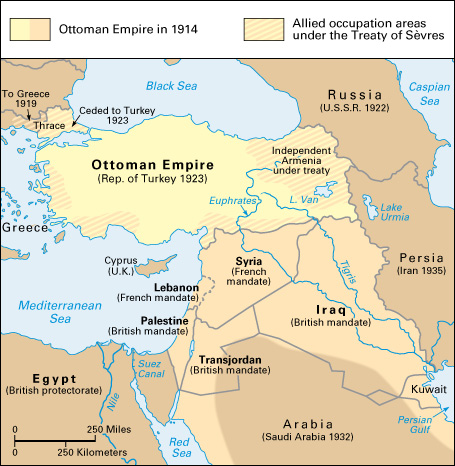Armenian Genocide refers to the mass deaths of about 1 1/2 million Armenians in the Ottoman Empire during World War I (1914-1918). At the time of the war, the Ottoman Empire covered what is now Turkey, plus some other lands in western Asia. The term genocide refers to the systematic extermination of an ethnic or racial group. Historians generally agree that the Armenian deaths were the result of genocide. However, the Turkish government has disputed the details of the deaths. It claimed that the incident did not constitute genocide.

From 1514 to 1918, most of Armenia was part of the Ottoman Empire. During the second half of the 1800’s, the growth of nationalism among Turks, Armenians, and other peoples began to cause conflicts within the empire. Russia defeated the Ottomans in the Russo-Turkish War of 1877-1878. The defeat brought about the reorganization of parts of the Ottoman Empire. The question of Armenian independence soon became a matter of international interest. It also threatened the stability of a weakened Ottoman Empire.

Ottoman authorities suppressed expressions of Armenian national identity. During the late 1800’s, Armenians under Ottoman rule suffered increasingly from ethnic and religious discrimination, heavy taxation, and armed attacks. From 1894 through 1896, and again in 1909 and 1912, Ottoman Turks and Kurds carried out campaigns to wipe out the Armenian population. Many thousands of Armenians were killed.
During World War I, Armenia was a battleground between the Ottoman and Russian empires. The Ottoman government became concerned with Armenian support for Russia. In 1915, the Ottoman government deported Armenians from western Armenia into a desert area in what is now part of Syria. In what many consider to be genocide, about 1 1/2 million Armenians were killed or died from lack of water and food.
The Turkish government, which replaced Ottoman authority following the war, has claimed that the number of Armenian dead was exaggerated. It said that the Armenians were casualties of war—not the victims of systematic genocide. However, dozens of countries around the world have formally recognized the mass deaths as genocide.
A number of survivors fled to Russian Armenia, where the Republic of Armenia was founded in 1918. Further violence against Armenians occurred in Turkey from 1920 to 1923, as the Turks fought to expel the Greek army that was placed there after World War I.
See also Armenia (Ottoman rule); Turkey (World War I).
